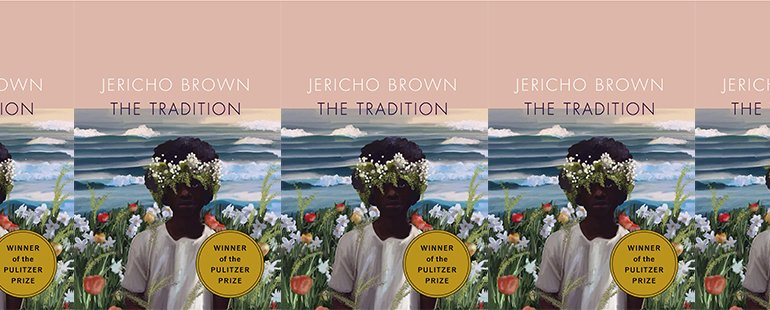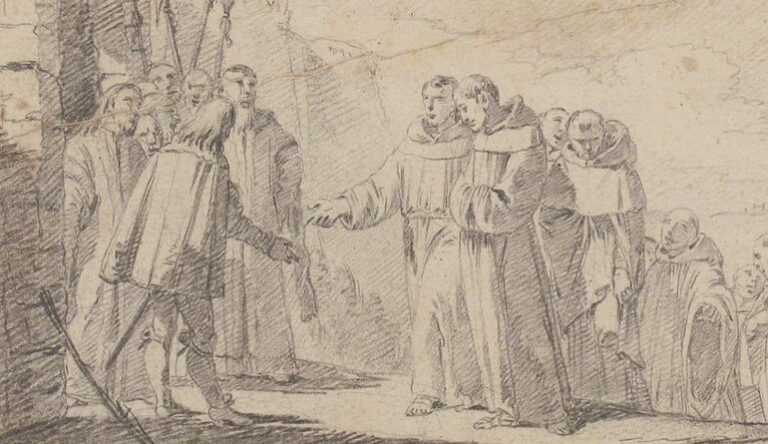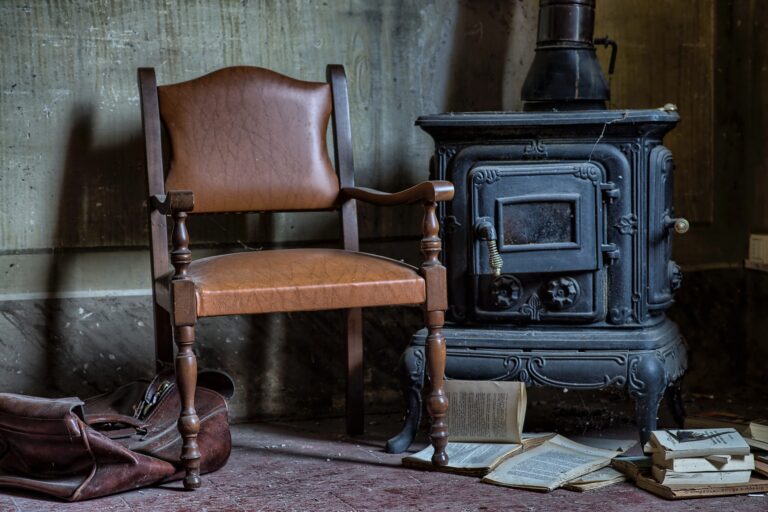How Home Lets Jericho Brown Bloom Poems About His Subconscious

In the first of the “Duplex” poems in Jericho Brown’s Pulitzer Prize-winning collection, The Tradition, Brown repeats the line “A poem is a gesture toward home.” Brown doesn’t write poems knowing where they will go—he writes hoping to explore his subconscious, often grounding himself and the reader early on with a physical space, a “home.” But home, to Brown, is not just a house—it is also his own body, his garden. Brown uses each of these physical spaces, these homes, to analyze, dissect, and bloom thoughts that are hidden in his subconscious—thoughts of the traumas and terrors of the world around him, which threatens Black and Brown bodies and endangers LGBQTIA+ peoples. Each of Brown’s poems that “gesture toward home” use the physical space around him to explore these difficult thoughts while tethering him to safety.
Brown often starts his poems with a solid image, setting, or poetic form, building outwards into the narrator’s thoughts about home, safety, and this country we live in then circling back to where he started. By not knowing where a poem will go when he’s first writing it, Brown helps the poem stay true, allowing him to explore it and his subconscious honestly. This technique allows Brown to just be—to be in his poem, to be in his home—and it allows us as readers to tag along for the ride. It also allows us to explore a little of our home and our subconscious, which we must face and try to understand, while tethering us to the safety of his home, of these poems, of the present moment and space, as we and Brown navigate topics that are too big for one person to grapple with alone.
The collection’s titular poem starts off with three plant names, then moves to Brown talking about how “We thought / Fingers in dirt meant it was our dirt.” These opening lines allow us to get grounded with the narrator in the garden. We can feel the dirt, can picture the flowers, can understand how having dirt fill the lines of one’s hands gives one the feeling of ownership over the land they’re working. In this poem, every thought is punctuated by flowers, their names italicized. The flowers act like parentheticals wrapping around the thoughts of the history of the land, and the terrors of the present day. Brown talks about the summer’s “bloom” and how newscasters declare it is hotter than any summer “when our dead fathers / Wiped sweat from their necks.” This shift shows us where this gesture of home is going, shows us that Brown is thinking about the history of this land. You can see him attach the thought of his father, his ancestors, to the prior one of working in dirt and knowing it was not theirs. Brown’s journey fully blooms into its complete thought when he writes: “Men like me and my brothers filmed what we / Planted for proof we existed before / Too late, sped the video to see blossoms / Brought in second, colors you expect in poems / Where the world ends, everything cut down / John Crawford. Eric Garner. Mike Brown.” Brown is still deeply embedded in his gardening world here. The word “plant” does a lot of work, serving as both the gardening term and an image in which Brown and his brothers plant their feet down in ownership of their ground, the spaces they call home, as well as referencing to plant, like how police officers have framed so many marginalized peoples for their own murder. Men are planted at home by their mothers, but in the real world, evidence is planted against them to excuse the officers for their killings. When we arrive at the last line of the poem, with the names of the murdered italicized, they are every bit as real for Brown and the reader as the flowers he’s among, and their absences are present in the collective mind of all of us.
While “Bullet Points” doesn’t immediately follow “The Tradition,” it is in close proximity that titular poem and could easily be read as its follow up. “Bullet Points” is a poem with such momentum and verve that one has to read it at least twice every time they pick it up. The setting is implied—a Black or Brown person’s home—and the story riffs off the conversation that many mothers and fathers of color have with their sons and daughters before they go out. Conversations about what to do if one is stopped by the police or followed by strangers that are ingrained in so many of our minds. This poem serves as a sort of response, with the child who is leaving the comfort of the home almost sending out a preemptive notice, a not-suicide letter, assuring their loved ones and strangers alike of the nature and the narrative of their potential murder. The poem starts with the lines “I will not shoot myself / In the head, and I will not shoot myself / In the back.” While these images aren’t as concrete as the flowers and dirt of The Tradition, they evoke clear images of so many people, like those we heard about at the end of “The Tradition.” In this poem, too, Brown uses strong physical descriptors, like when he describes the maggots “who live beneath the floorboards / Of my house,” and he again evokes the dirt and ground when he refers to “An officer of the law of the land.” But these thoughts center on the terror that awaits Black and Brown bodies outside of their homes. Brown says he doesn’t trust an officer “to cover me with a sheet / So clean my mother could have used it / To tuck me in.” He talks about reclaiming himself, his body, and about rejecting any future settlements that would be given to his or any mother over what they think the premature murder of a Black child is worth. He ends with the line “And more beautiful than the new bullet / Fished from the folds of my brain.” It’s a grotesque image to leave the reader with. The thought of the bullet being in his brain is already ingrained in his mind.
The second poem titled “Duplex” starts off the second section of The Tradition. Brown, who lived in a duplex as a child, created a form for the “Duplex” poems in this collection, which contain repeating lines (including the first and the last line of the piece). It mixes a sonnet, a ghazal, and the blues and uses poetic and musical rhythms to guide it. In this second “Duplex” poem, Brown starts and ends with the line “The opposite of rape is understanding.” Brown grounds the reader in nature with the line “A field of flowers called paintbrushes,” taking us back to the flowers of “The Tradition.” Men then roam in the poem, at first shirtless, then roaming the myth of having never hurt Brown before. When we return to the field, Brown says, “I want to obliterate the flowered field, / To obliterate my need for the field.” Brown knows he’s using the field, the physical grounding, as a crutch to allow himself to travail these hurtful thoughts and feelings. The field is a poetic distraction from the first thought, of being misunderstood. That feeling of being misunderstood is given root in the line “My body is a temple in disrepair.” Brown’s body is his own personal home, and the hurt he feels is structural to him, is the bones of the home. The fields he waxes poetic on couldn’t save him from this hurt, so he wants to destroy the distraction and properly face and heal from his pains. The poem ends with him facing and labeling the hurt, the rape, the misunderstanding. It lets him cast aside the crutch for a bit in order to repeat the trauma that occurred to him, in order to repeat the fact that his body has been neglected, damaged.
In “Meditations at the New Orleans Jazz National Historic Park” Brown talks about those moments in which he gets to lose himself, in the present, in himself. He breaks the poem down into three meditations he had while sitting in a park in his former home of New Orleans. Each meditation is set in a space you can physically sit in, a space you can physically embody. The first addresses Tom Dent, a New Orleans author and activist who was the son of the president of Dillard, where Brown went to school. The second meditation talks about how the brass bands in New Orleans play “no theft, no rape.” The bands are purely in the moment, playing the music that lets Brown just be, creating a home in the space where he sits. Brown is able to escape the tough subconscious thoughts of his earlier poems, feeling a sense of home that isn’t invaded by the oppressive forces of the outside world. That sound helps him lose himself in the bands’ personal gestures toward home and lets Brown gesture toward his own home. In the last meditation, Brown talks about how he is nothing if he can’t enjoy his seat in that moment. He talks about how that moment, a physical seat and the keeping at bay of the terrors around him, is home. It may be fleeting, but at that precise moment, there is nothing in his subconscious besides the poem that is nothing besides the acknowledgment and enjoyment of the fact that “The seat / Has stayed / Warm.”
Throughout The Tradition, Brown grounds the reader in his surroundings, in different homes, before exploring the subconscious with his poetry. These poems grounded in home let Brown explore thoughts on the terror and trauma he and his people have suffered, tethering him to the safety they present. They also let Brown relive moments of bliss. As a result, they allow him to grow his home beyond the boundaries of his person. As readers living through a tumultuous time—in the middle of this pandemic, in the middle of an attempted coup, as our country is flirting with the possibility of a dictator for the first time in our lives—we should all search for our poems, for a way to gesture toward home and explore the thoughts that are bubbling under the surface, so that we can analyze and dissect subjects too big for any one person to tackle.


